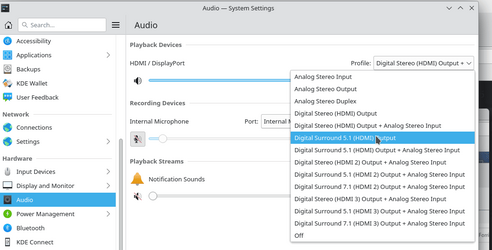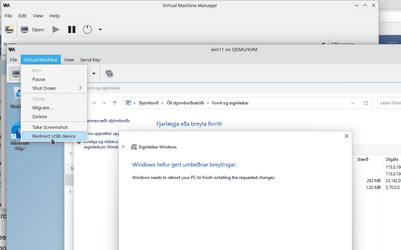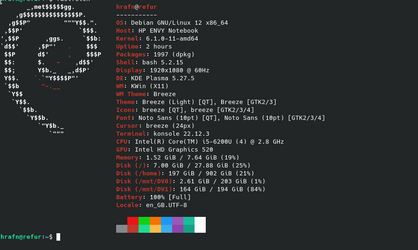S
Sandi1987
Guest
Which one should i use for Windows/Linux (Guest)? VMware Workstation Pro have better 3D-Acceleration. I don't like Hyper-V.
Follow along with the video below to see how to install our site as a web app on your home screen.
Note: This feature may not be available in some browsers.
You could try the free vmware player product - although it lacks a load of features -- and with the sale of vmware to broadcom it's likely to be deprecated pretty soon as they go all "Enterprise".VMWare Workstation Pro is definitely better, but isn't it a paid program, as opposed to Oracle Virtualbox ?
Windows Guests (Pro+, not Home) are best on Hyper-V in terms of performance as it is a type 1 hypervisor.Which one should i use for Windows/Linux (Guest)? VMware Workstation Pro have better 3D-Acceleration. I don't like Hyper-V.
Agree on the whole but latest Debian (rel 12) and Arch Linux sound works 100% fine on Hyper-V .Windows Guests (Pro+, not Home) are best on Hyper-V in terms of performance as it is a type 1 hypervisor.
Linux guests are generally limited (no sound) on Hyper-V unless Linux has xrdp and supports Hyper-V enhanced mode (Ubuntu or Kali for sure). So in most cases, vmware is better for Linux guests.


Rather back to front - the fault lies with the android emulators. Bluestacks (and I presume) LDPlayer are effectively type 2 hypervisors which do not play well when the Hyper-V type 1 hypervisor is enabled.I don't like Hyper-V because with Hyper-V enabled BlueStacks and LDPlayer Android Emulator not working.
Hi there@jimbo45, Is it possible to create Fixed Disk Size in KVM in Linux like in VMWare Workstation and VirtualBox? Disk size rising when i copy/install.
KVM (VFIO) doesn't support Snapshots in UEFI VM.
@jimbo45My big problem with Hyper-V is that (well at least I don't know how to do it) that you should be able to do a "Dynamic USB re-direct" after booting up the guest. (No problem on KVM/QEMU).
View attachment 66030
RDP is not really a secure medium - especially if you have remote hosts / guests.@jimbo45
The redirect in screenshot, via the UI, uses Spice.
I'm on Centos Stream 9 currently where (also on the whole el9 releases) Spice has been deprecated and replaced by VNC. So back to square one as this is no longer possible here. This is unfortunately only el9, on Fedora / Debian / Arch all looks good.
But to get back to the question, the USB redirect in Hyper-V, via the UI also, has to be done via the Enhanced Session / RDP options where you can add the devices, usb's, printers, etc.
The redirect in virt-manager or virt-viewer (if you use it also) is the same one via Spice. So the one in Hyper-V has to be via RDP / Enhanced.
No other way that I see.

Showing gratitude is important in online communities. Use the "like" button to appreciate helpful content. This motivates people to keep sharing knowledge. A "like" gives 1 point, "Helpful" gives 5 points, and "Great support" gives 10 points for exceptional help.











